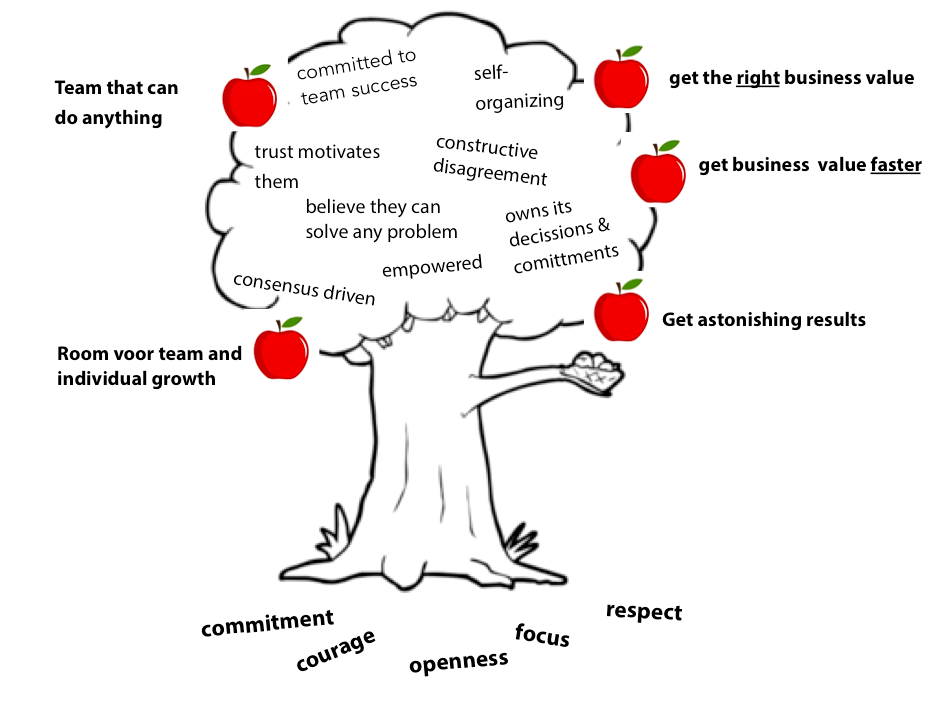This post has been written as a documentation for the Agile Ottawa Meetup 101 session held on Sept 10, 2013.
As this is the first Agile 101 session of the season, I thought it useful to introduce the manifesto and its underlying values.
As an Agile Coach, whenever I walk in a company I read their corporate values and try to map them to the Agile Values. In general, it is impressive how much they have in common and it is the best way to introduce Agile to a company: by reinforcing their own values.
In 2001, a group of methodologists gathered and discussed how they managed to succeed in Software Development. Each had a different approach; old ideas, new ideas, transmuted old ideas. They came out with a short proclamation of what they thought led them to success.
Manifesto for Agile Software Development
We are uncovering better ways of developing software by doing it and helping others do it. Through this work we have come to value:
- Individuals and interactions over processes and tools
- Working software over comprehensive documentation
- Customer collaboration over contract negotiation
- Responding to change over following a plan
That is, while there is value in the items on the right, we value the items on the left more.
I like to summarize this with only two words: “Inspect and Adapt”. Basically, that is what they did over time. They worded it using this manifesto and the 12 principles underneath it.
So “Agile” is just a word they came up with to express this idea of “inspect and adapt”: It applies to the Business, the working environment; the Code; with clients; and in regards to Project Management.
Later, Lyssa Adkins came up with the High Performance Tree to introduce a Metaphor for High Performance. She used this metaphor in order to lead a team beyond their actual efficiency. Each root of the tree is associated with a value. She explains, in her book “Coaching Agile Teams”, that those are the Scrum Values.

Commitment, Openness, Respect, Courage, Focus. Intrinsically, you can match up those values against the Agile Manifesto.
Commitment and Focus – Working Software.
Openness – Customer collaboration
Respect – Individual and Interactions.
Courage – Responding to change.
Of course, Lyssa gives a lot more information regarding those values and their impact on a Team in her book.
I was flabbergasted the first time I was introduced to those “Agile Values”. They are also very close to my personal values!
Just like everything else in Agile, this made sense. It is as easy as following my heart with respect to decision making in software development. And the beauty in all this: those values and this manifesto are parenting of all the underlying practices of Agile. So whenever you feel pain, whenever you are lost, come back to the roots and find your way back by addressing the obstacles that prevent the respect of those values. Don’t know exactly how? Ask your coach!

